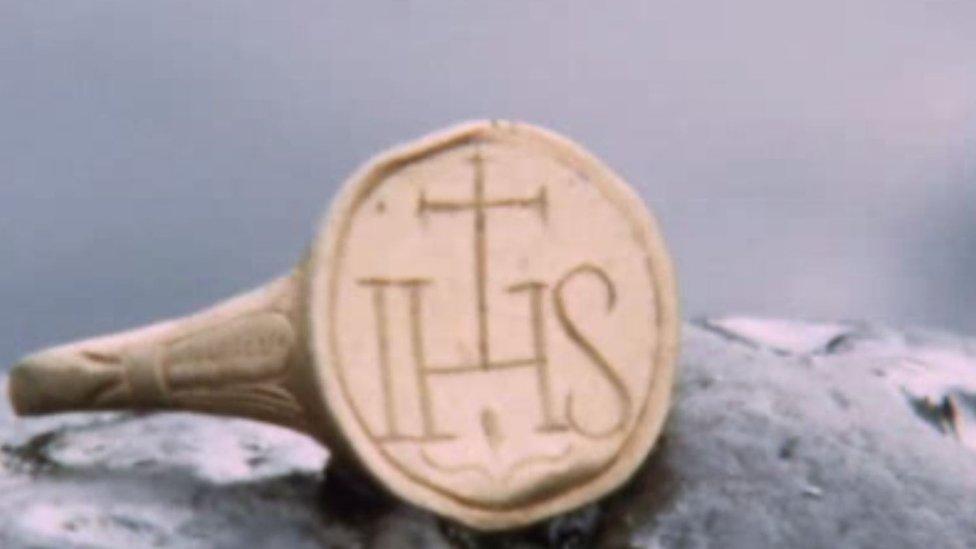Spanish Armada: Wreck's discovery remembered 50 years on
- Published
It's 50 years since the City of Derry Sub Aqua Club found the wreck
"The sand was slowly falling from the gun and all of a sudden I had this feeling of being in a time warp."
It was early 1971 and underwater archaeologist Dr Colin Martin was just feet from one of the La Trinidad Valencera's cannon.
The Spanish Armada galleon sank in 1588, taken by rough seas off Kinnagoe Bay, in County Donegal.
As Dr Martin watched, he "quickly realised this was a site of huge importance".
"Four bronze guns were visible, the wheels from the gun carriages and a couple of anchors. The guns with the (coat of) arms of Philip II, were not only wonderful artefacts in their own right, but reeked of the story of the Armada itself," he told BBC News NI.
The wreck had lain dormant and undiscovered for centuries, until 20 February 1971, when divers from City of Derry Sub Aqua club found the once mighty vessel.
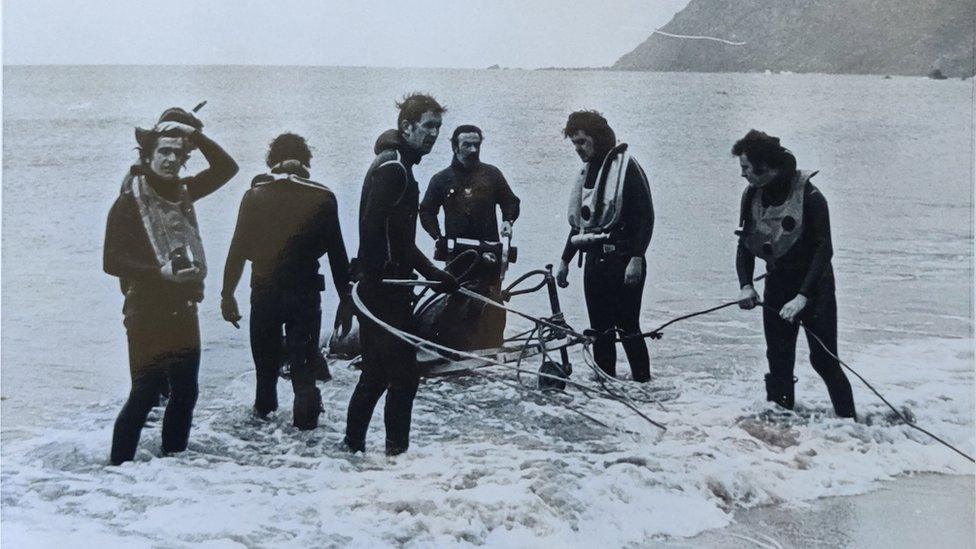
The club had known the wreck was in the area and had searched for it on a number of times
Danny O'Donnell, now aged 75, was among the Derry dive team to discover the wreck.
"If I am honest I knew little about La Trinidad Valencera at first, but all the guys in the club had been looking for it for a long time. As they told me bits and pieces, I got more and more interested."

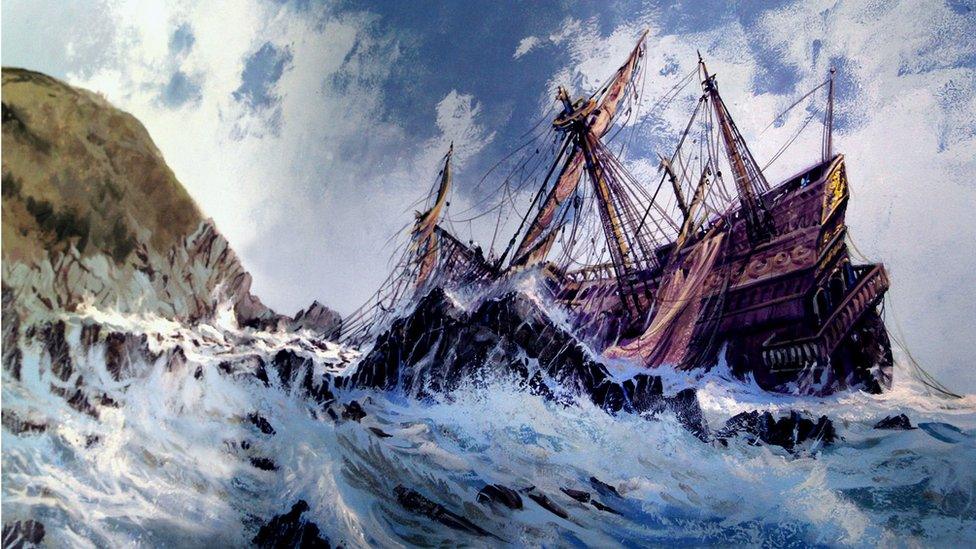
La Trinidad Valencera sank in September 1588
La Trinidad Valencera and Spanish Armada
A refitted 1,000 tonne Venetian merchant ship, La Trinidad Valencera was commandeered by the Armada in Sicily
It was one of 120 galleons that sailed from Portugal under the flag of King Philip II in May 1588.
In the summer that year the Armada set sail for England after decades of hostility between Spain's catholic King and the protestant Queen Elizabeth I of England.
Once in-laws, when Phillip was married to Elizabeth's elder sister Mary, the Spanish king was determined to overthrow the new Protestant regime in Britain.
La Trinidad Valencera sank off Kinnagoe on 12 September 1588.
Over 400 sailors and soldiers abandoned ship, making it safely to shore.
Some 300 of the ship's men were massacred by the Earl of Tyrone, Hugh O'Neill's militia. O'Neill had sworn loyalty to the English crown.
They are buried in two, now unmarked, Armada graves in County Donegal.
It's thought more than 20 ships were wrecked along the north and west coasts of Ireland as the Armada made its way home after defeat at the hands of the English.

Finding the ship became the club's raison d'être. They knew roughly where the galleon was said to have sank but previous dives had been fruitless. That was to change on a late winter Saturday morning in 1971.
The weather had been bad and as the divers gathered at Kinnagoe, they were put off venturing too far out.
Their dive much would be closer to shore than originally planned.
"It was just too bad a day to walk away across to the far side with all the gear, we said, 'we'll just dive in here'," Danny said.
The storm had cleared away much of the sand on the sea bed.
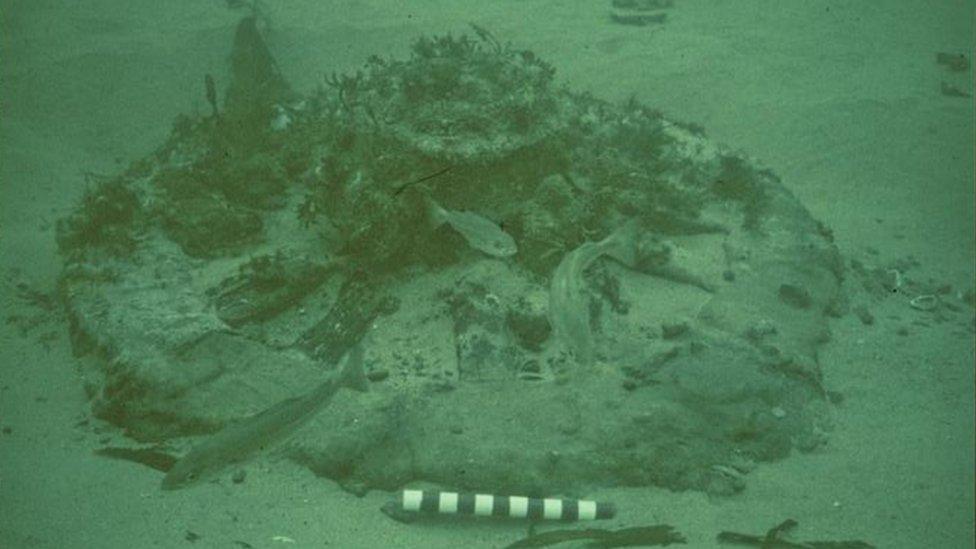
The vessel's gun wheel as filmed by Dr Martin in 1971
Suddenly, Danny remembers, nearby divers Pat Stewart and Archie Jack had resurfaced. They were shouting "cannon, cannon".
"And that was that, myself and Jack Scoltock were not too far from them, it wasn't long before we found a second one," he said.
Fifty years on and the discovery is still hard to fathom.
"To find a Spanish galleon is every diver's dream. It was one of those things that just seemed to happen by accident, it was a snap decision to go into the water there, and there the ship was," Danny said.
The divers retreated to a nearby hotel, to converse as to what to do now. They needed to know the legal position of the find, plan how best to proceed.
They vowed to keep the find secret while they shaped their strategy.
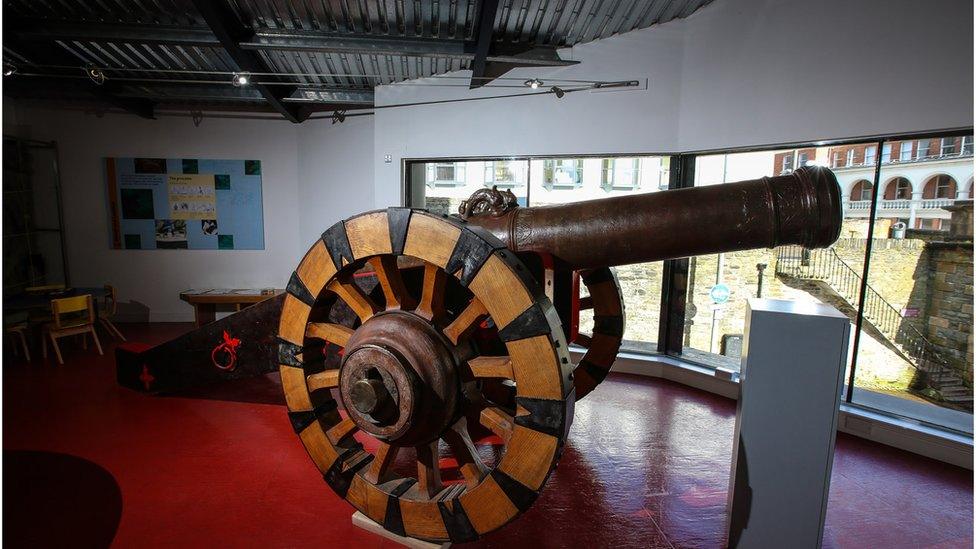
One of the guns recovered from La Trinidad Valencera, now on display at the Tower Museum
A few weeks after the find, Dr Martin was at a conference in Bristol.
He was a veteran of previous Armada excavations at Blasket Sound off Ireland's south west coast and off the Shetlands' Fair Isle.
This, he said, meant he was known as "the underwater archaeologist who knew about the Armada".
The Derry divers, determined to have their find documented had contacted the BBC. A team of documentary makers were keen.
"I was at this conference, as were two of the producers. They'd been approached by the Derry divers, who wanted to raise these guns and were sending a film crew.
"They asked if I would come along, and they asked if could I operate an underwater cine camera."

The BBC 'Chronicle' documentary first aired in 1974
With only limited filming experience, Dr Martin felt compelled to expand upon the truth.
"I told them I could, I was desperate to do it, I had only ever done a tiny bit of very amateur filming."
Within days he was in the water off Kinnagoe, camera in hand, staring at a 16th century Spanish cannon.
"There in front of me was the (coat of) arms of Philip II, in prime condition, crisp and new, and I knew I was seeing the reality of the Armada itself."
The footage he captured now plays in Derry's Tower Museum as part of the Armada exhibition. Many of the conserved items from the ship are on display there and at the Ulster Museum.

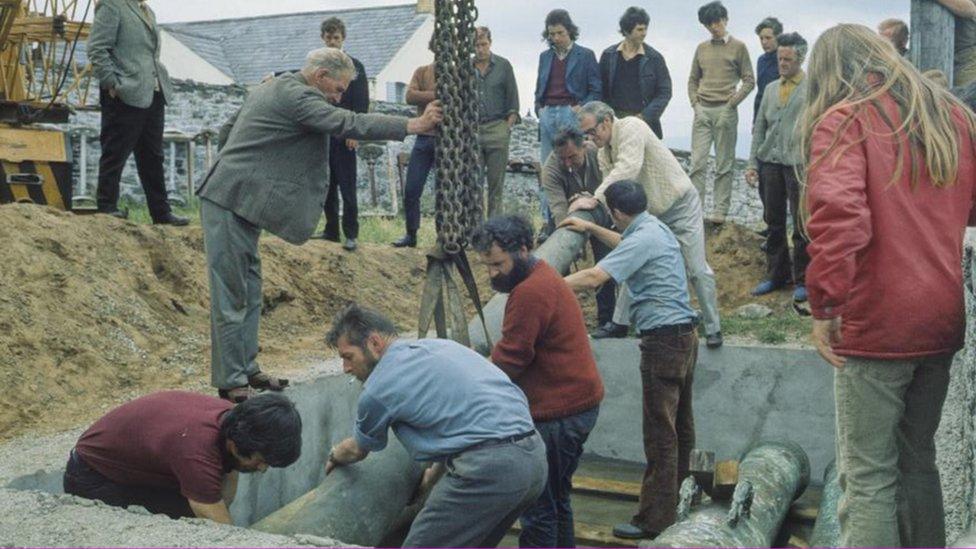
When first recovered the ship's four guns were put into a specially constructed tank and covered with fresh water.
'One of those peculiarities'
Few people are as well versed in the story of La Trinidad Valencera as Dave Atherton.
He joined the City of Derry Sub Aqua Club shortly after the discovery, diving the site until excavation stopped in 1983.
While not as well known as the Girona - an Armada ship that floundered off the coast of County Antrim - the significance of La Trinidad Valencera cannot be underestimated, he told BBC Radio Ulster's Your Place And Mine programme.
"It is one of those peculiarities that the Girona yielded immense treasure, lots of coins, gold and silver and jewellery.
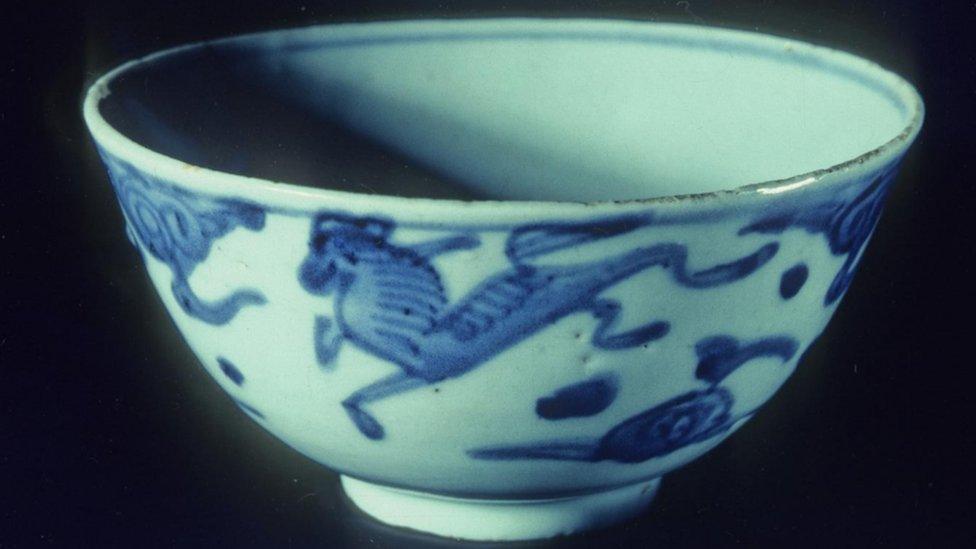
An intact Ming Dynasty porcelain bowl was among the horde of items recovered
"La Trinidad Valencera however, because she was wrecked on a clean sandy bottom saw an awful lot of delicate organic material preserved, wood, leather, textiles, ceramics.
"There's been many scientific, academic publications written about the material from La Trinidad Valencera but there's almost nothing, so far as I am aware, on the Girona. It is archaeologically barren."
Dave said he has spoken to "one or two of the surviving divers" ahead of the discovery's 50th anniversary.
"They are all saying 'Fifty years? its only like yesterday'," he said.

For two years, while staying with a local family close to the site, Dr Martin dived every day, joined at the weekends by the City of Derry divers.
Without them, "none of this would have happened".
"The Derry boys," Dr Martin added, always "went about things the right way. Throughout the project they always did everything right."
Roisin Doherty, curator at the Tower Museum - home to an Armada exhibition- said the dive team "are an integral part of this story".
"The team were determined to carry out the excavation with very few resources and at their own personal risk and it's thanks to them that we have this snapshot of history to share with people today".
The museum's 'An Armada Shipwreck- La Trinidad Valencera' exhibition has been digitised to mark 50 years since the ship was discovered and is available online, external from 20 February.
Related topics
- Published27 January 2021

- Published27 May 2017
